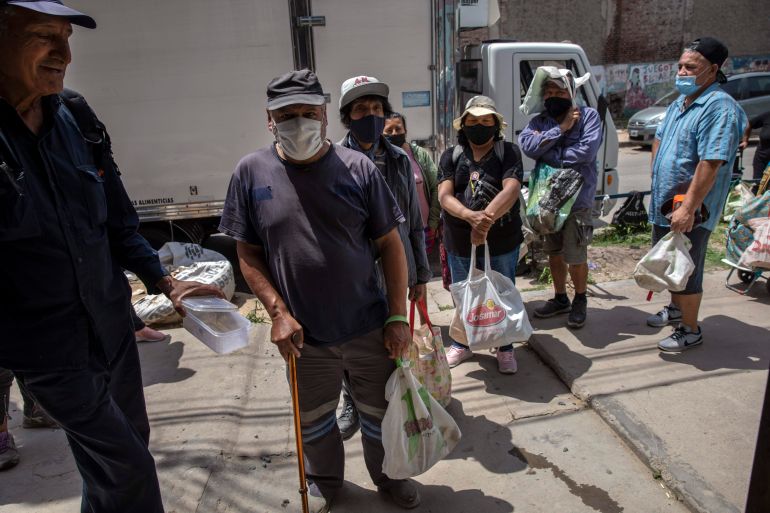Hunger increased by 30 percent in Latin America since 2019: UN
Latin America and the Caribbean is facing a critical situation in terms of food security, UN official says.

The number of hungry people in Latin America and the Caribbean has risen by 30 percent since 2019 to reach its highest level in 15 years, a coalition of United Nations agencies said, calling the situation “critical”.
More than 59 million people across the region currently are not getting enough to eat, an increase of 13.8 million people in just one year, five UN agencies said in the Regional Overview of Food Security and Nutrition 2021 report published on Tuesday.
Keep reading
list of 4 itemsBugs for breakfast? Insects could be key for the future of food
45 million people on the edge of famine, says UN food agency
‘Big Food’ at the UN table: A recipe for big waste?
More than nine percent of people across Latin America and the Caribbean are going hungry, the agencies said.
“We must say it loud and clear: Latin America and the Caribbean is facing a critical situation in terms of food security,” Julio Berdegue, a regional representative with the UN’s Food and Agriculture Organisation (FAO), said in a statement. “There has been an almost 79 percent hike in the number of people living in hunger from 2014 to 2020.”
The coronavirus pandemic has “exacerbated the situation”, added Rossana Polastri, regional director of the International Fund for Agricultural Development (IFAD), the UN’s agricultural bank.
In Brazil, the region’s largest and most populous country, some 19 million people have gone hungry during the pandemic, according to a study published earlier this year, while nearly 117 million – more than half the country’s population – live with some level of food insecurity.
Along with the people who are going hungry in absolute terms, four out of every 10 people in Latin America and the Caribbean – 267 million people – experienced moderate or severe food insecurity in 2020, said the UN report.
That is 60 million more people than in 2019, an increase of nine percentage points, the UN said, calling the increase “the most pronounced rise in relation to other world regions”.
Women were more affected by rising hunger in Latin America and the Caribbean than men, the UN agencies also said.
In 2020, 41.8 percent of women in the region experienced moderate or severe food insecurity, compared with more than 32 percent of men. The gender disparity has been rising in the last six years; it increased sharply from 6.4 percent in 2019 to 9.6 percent in 2020, the UN said.
Nevertheless, hunger remains less prevalent in Latin America than other parts of the world, the UN agencies said.
Globally, 11 people die from hunger every minute, according to a July report from the charity Oxfam, which found the number of people facing famine-like conditions has increased by six times over the past year.
Latin America and the Caribbean also continues to show improvement in reducing stunting in children – the product of long-term malnutrition – the UN report said, though progress has slowed since the onset of the pandemic.
The regional prevalence of wasting in children stands at 1.3 percent, significantly lower than the world average of 6.7 percent, said the UN agencies.
Along with rising hunger, one in every four adults in Latin America and the Caribbean – 106 million people – suffers from obesity, the UN agencies said. That figure represents an increase of 9.5 percent in the Caribbean and more than seven percent in South America between 2000 and 2016, said the report.
“In Latin America and the Caribbean, COVID-19 has made a pre-existing malnutrition crisis worse,” said Jean Gough, regional director for the UN children’s fund UNICEF. “With services disrupted and livelihoods devastated, families are finding it harder to put healthy food on the table, leaving many children hungry and others overweight.”